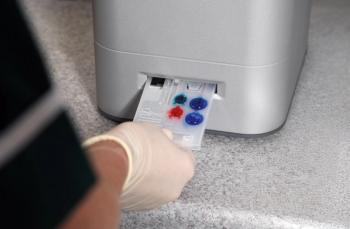
- dvm360 October 2022
- Volume 53
- Issue 10
- Pages: 48
Monitoring pet health in a digital world
Wearable technology is taking the veterinary space by storm
With wearable technology becoming more common in human health care, it’s no surprise that it is emerging in veterinary care as well. Popular products for pets include collars and collar attachments like Whistle, Fi, FitBark, Link, and Petpuls. Connecting through a smartphone app, they have an array of functions, from GPS tracking to the monitoring of activity, sleep, health-related behaviors, and even emotional states. As they evolve, these products become more lightweight and include more features.
Wearable technology for pets started trending during the COVID-19 pandemic, according to Kirsten Oliver, VN, ADVN, CVT, CCRP, CVPP, VTS, because that was when we began “using digital technology to connect with the rest of the world.” Now that things are getting back to normal, “people are wanting to know what their pets are doing at home,” she told dvm360® in an interview.
The pros
“Let’s face it, if it’s on an app or...on our phone, we want it,” Oliver said, explaining that wearable technology lets pet owners know when their fur babies should go to the vet and helps clinicians assess the animal. If a client says their dog has been pacing for the past 5 nights, for example, “that’s an indication of pain. What can we do? And what sort of diagnostics can we run?...It’s taking a little bit of the guesswork out of things. It’s good information to start with,” she said.
Fear Free founder Marty Becker, DVM, told dvm360® that wearable technology helps veterinarians make a diagnosis. “You could tell why a pet was wetting at a certain time or detect if a pet is lame,” he said.
Oliver also said that it’s great to see innovative products being designed to benefit animals. They are excellent monitoring tools for cats and dogs that experience chronic diseases, she noted, and come in handy when owners
are away because they can log in to keep an eye on their pets. There are also in-clinic devices like MeasureON! and PainTrace. MeasureON! measures temperature, cardiac electrical signals, heart and respiratory rates, and activity levels, and PainTrace measures chronic and acute pain levels and is especially helpful in the veterinary rehabilitation setting, Oliver said. Becker pointed out that these tools are transforming veterinary care. They are extremely accurate and can check an animal’s vitals while it sleeps. That’s important because, according to Becker, “when you sleep, you heal faster.”
The cons
Although wearable technology has many benefits, it is expensive and can lead to “helicopter pet parenting,” Oliver said. “You don’t want [clients] checking...vitals every 5 minutes and being like, ‘Has it been a 2-beat change in his heart rate? Do I need to bring him to the veterinarian?’”
She suggested that physicians tell pet parents what is normal and abnormal so they know when a visit to the vet is required. For his part, Becker noted that wearable technology often indicates whether a concern is legitimate.
The future
What’s in store for these devices? According to Oliver, the sky’s the limit. Today’s digital kids will become tomorrow’s digital adults and will want this kind of gear. On the veterinary side, Becker expressed the hope that current students learn to use wearable technology in the same way that he learned to use a stethoscope and his eyes, ears, and sense of smell to diagnose disease. Such knowledge will not only help them when they go into practice but also enable them to advance pet care.
Articles in this issue
about 3 years ago
Bridging the veterinary inequity gapabout 3 years ago
Every veterinarian must care about African swine feverabout 3 years ago
Developmental orthopedic disease: a clinical approachabout 3 years ago
Veterinary conference anxietyabout 3 years ago
Diversity is the key to success with reptile dietsabout 3 years ago
Ready to retire? Here’s how to prepare to sell your hospitalabout 3 years ago
You can navigate motherhood and be a veterinary professionalabout 3 years ago
Choosing CBD for caninesabout 3 years ago
Team building with vet techsNewsletter
From exam room tips to practice management insights, get trusted veterinary news delivered straight to your inbox—subscribe to dvm360.




